Introduction
After our last edition, a special poetry number, we return to a more conventional format. However, as we received more poems than we could print in one go, we will include one in each edition for the time being. This does not rule out having another poetry-only edition, but this time with members’ own efforts.
Roger Mitchell returns to the American scene, and Alan Potter provides some useful scientific background to the contemporary concern with viruses. Finally, Jacqui Henshaw has sent us a poem with strong personal associations.
We apologise for still not having sent out refunds for the Human Brain course, but are closer to getting some sense from our bank and we will settle this matter as soon as we can. Also, we are investigating ways of fulfilling the requirement to hold an AGM, which might be done entirely by email and postal communications. We are also considering the possibility of extending current membership entitlement for another year without a further subscription.
The American Cottage
We tend to think of the cottage as a quintessentially English form of housing. It ought to be traditional and picturesque, built of local materials and set in bucolic countryside. The approach should be through a colourful cottage garden. Americans by contrast might be expected to live in log cabins or sod houses. Quite a lot of them did. As 19th century America expanded westwards those whose priority was to own their own land endured hardship and deprivation in sod houses on the prairies or log cabins in the mountains and forests of the west. However, the majority of Americans remained ‘back east’ and many of them hoped to escape from overcrowded tenements to cottages in the suburbs or, better still, in the countryside or at the seaside. Owning, perhaps even building, a cottage was an aspiration and help was at hand.
First published in 1842, Andrew Jackson Downing’s Cottage Residences provided plenty of ideas and plenty of styles. Downing died in 1852 in a steamboat explosion on the Hudson River, but his book went marching on and continued to be influential. His designs owe a lot to the Scottish designer John Claudius Loudon who had published ‘Cottage, Farm and Villa Architecture’ in 1834 but there is something particularly American about them. All are functional as well as decorative, most use wood as the main building material and many have a front porch which Downing saw as the link between the house and its landscape setting. Some of these ideas have a good deal in common with those of William Morris who was 20 years younger than Downing.
Downing believed that improvement of the external appearance of a home would help “better” all those who had contact with the home. The general good of America was benefited by good taste and beautiful architecture, he wrote. Downing saw that the family home was becoming the place for moral education and the focus of middle class America’s search for the meaning of life. The three illustrations that follow show the progress of civilisation from the basic Labourer’s Cottage to the more elaborate ‘Cottage Villa in the bracketed mode’. This has both a front porch and a rear veranda and it is not accidental that the room that we might expect to be the kitchen is labelled ‘library’. With wooden houses set in their own garden (or yard), there are advantages in having a separate, free standing kitchen which reduces the risk of the destruction of the house by fire.

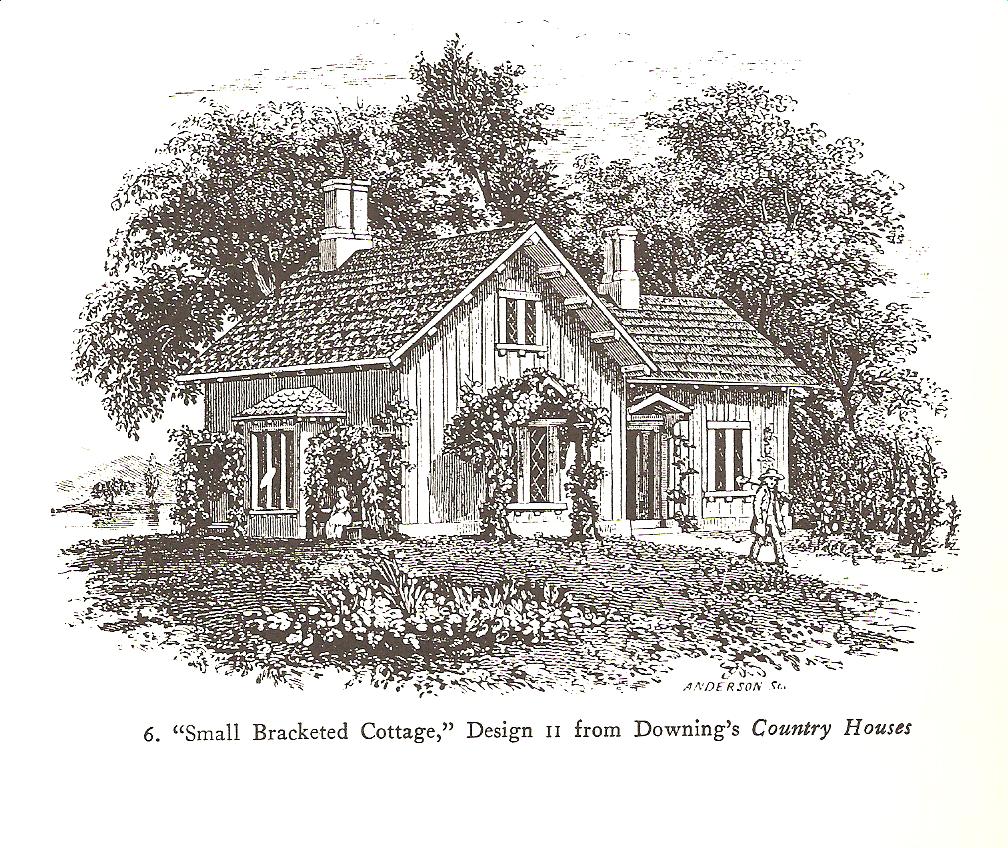
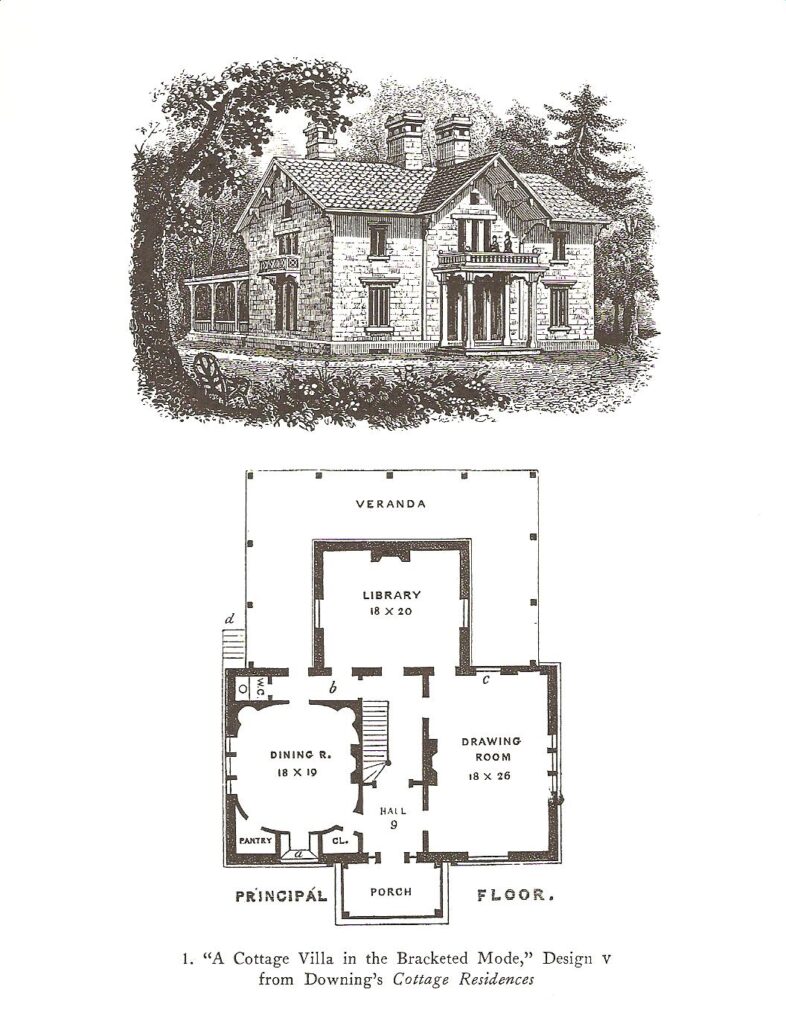
Many houses built in the second half of the 19th century were influenced by these ideas and they provide an architectural setting for ‘small town America’.
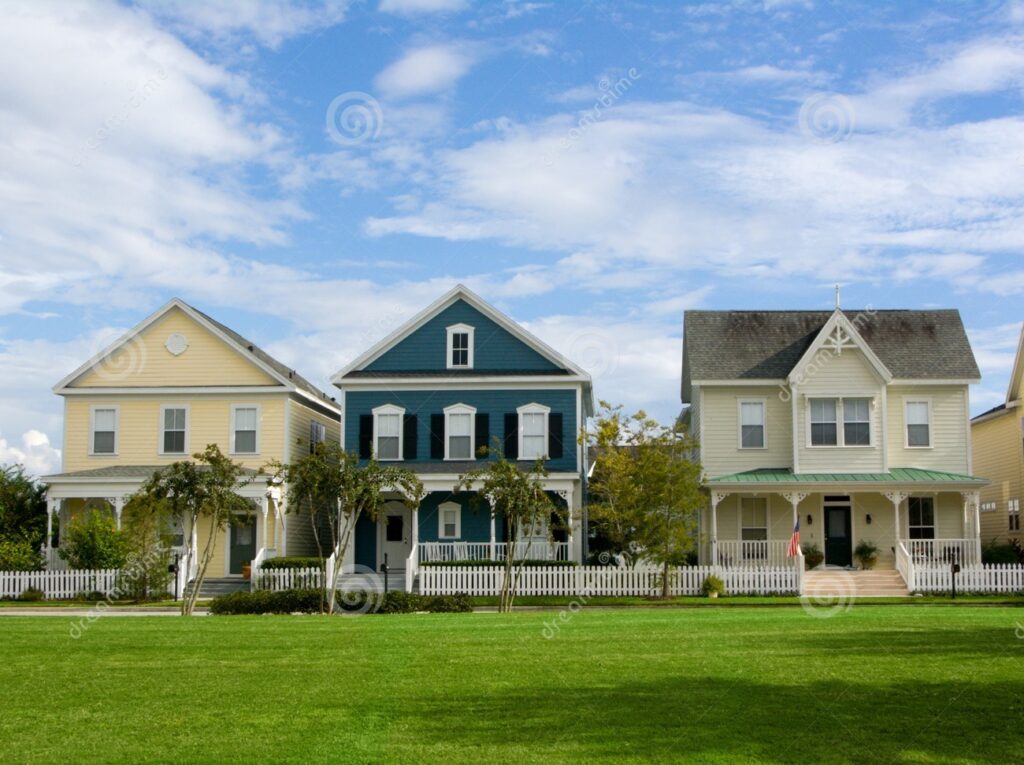
Most are relatively simple as in the two pictures below:
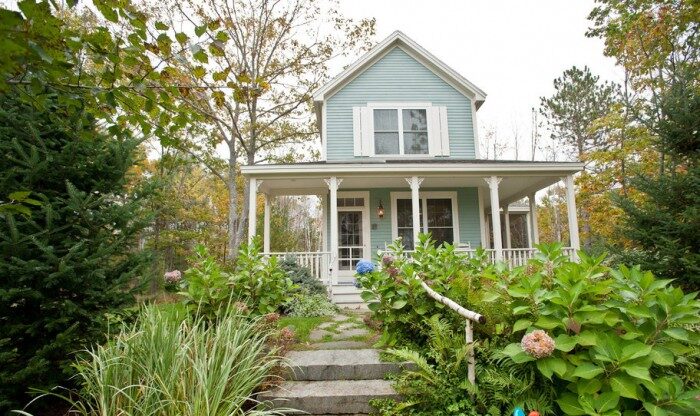
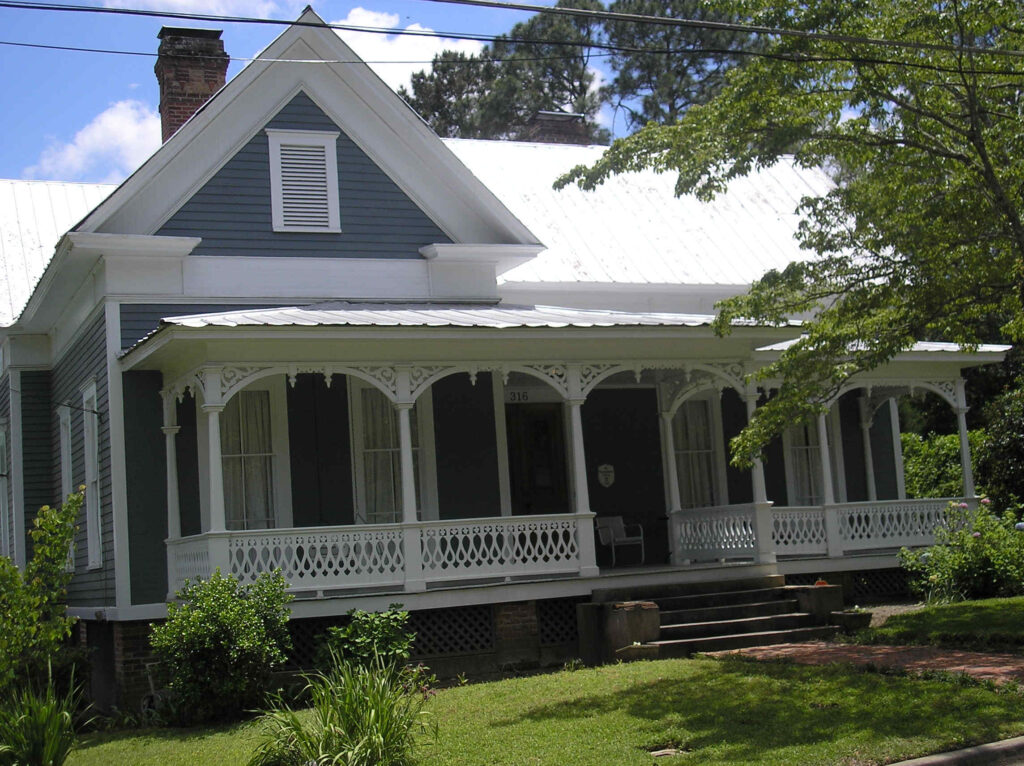
But elaborate decoration is hard to resist.
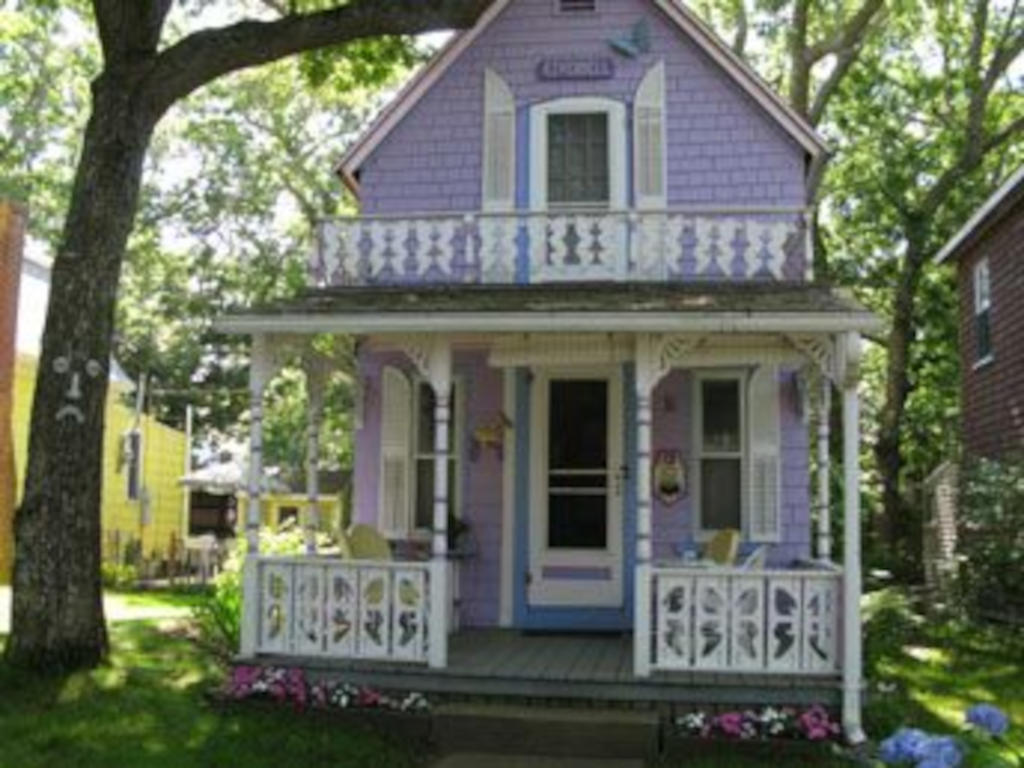
A particular favourite in this gothic cottage on the banks of the Hudson River shown in the two pictures below.
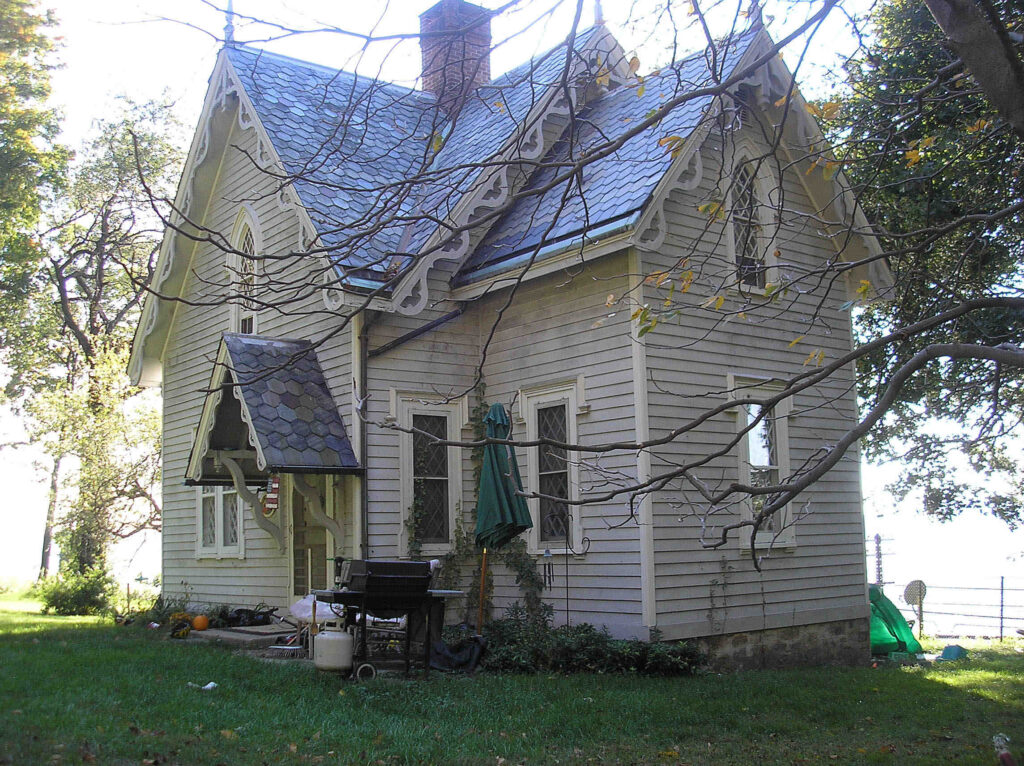
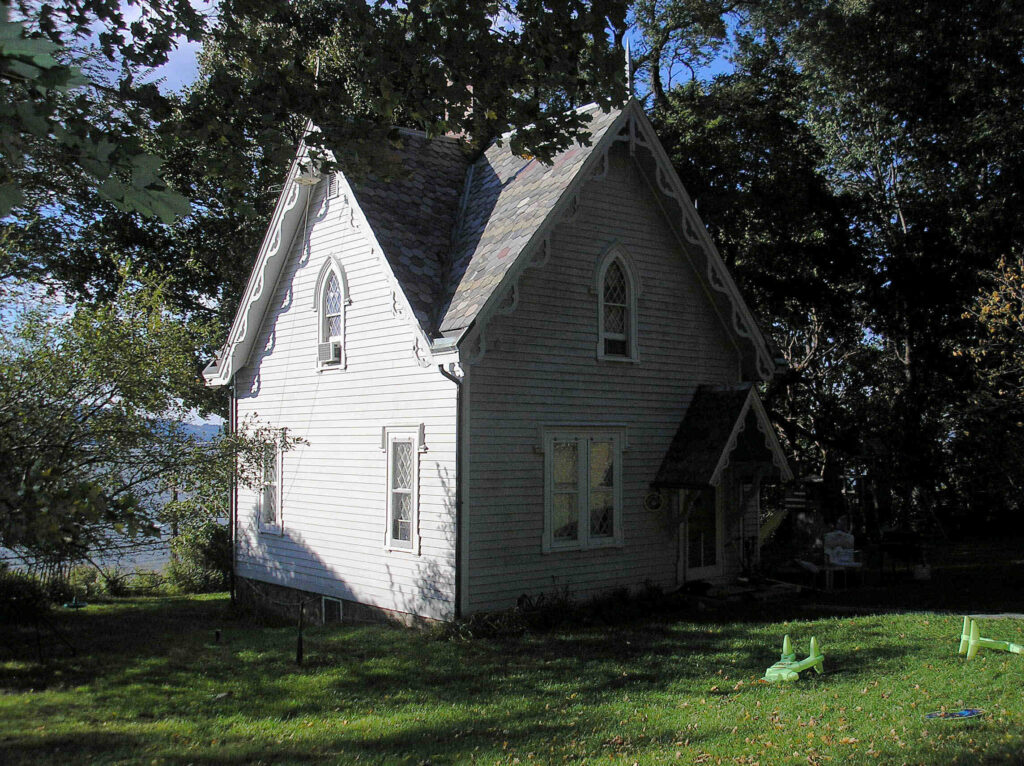
This simple cottage style also appealed to the rich – not for permanent residence but as a holiday home – and some of these cottages are real delights. At Jekyll Island, just off the Georgia coast, an exclusive club was established for the new plutocrats. At first they had to use the club buildings but then they were allowed to build their own cottages. Here are three examples all from the period around 1900.
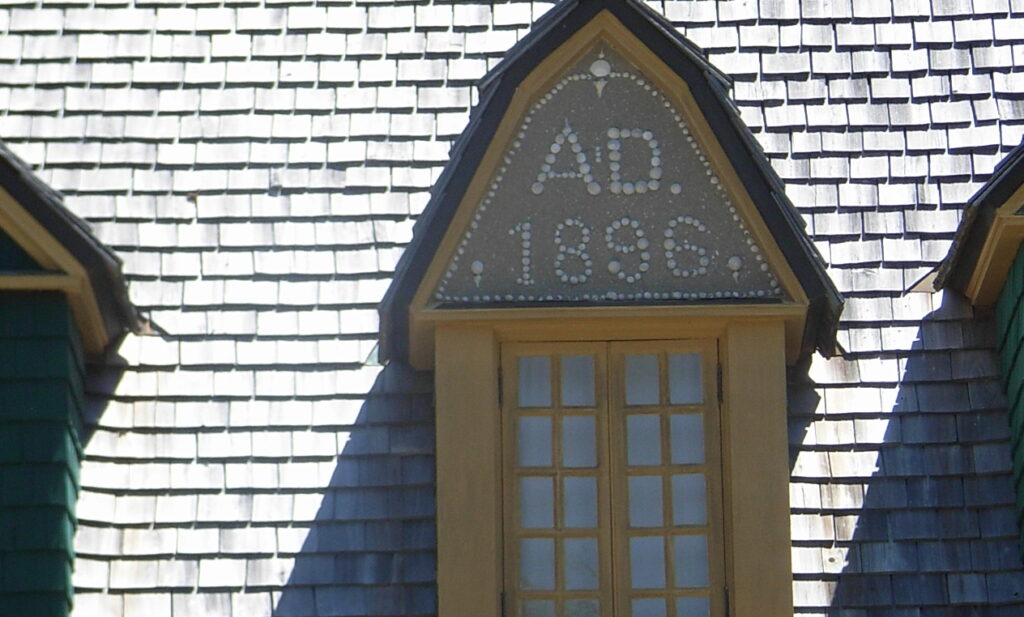
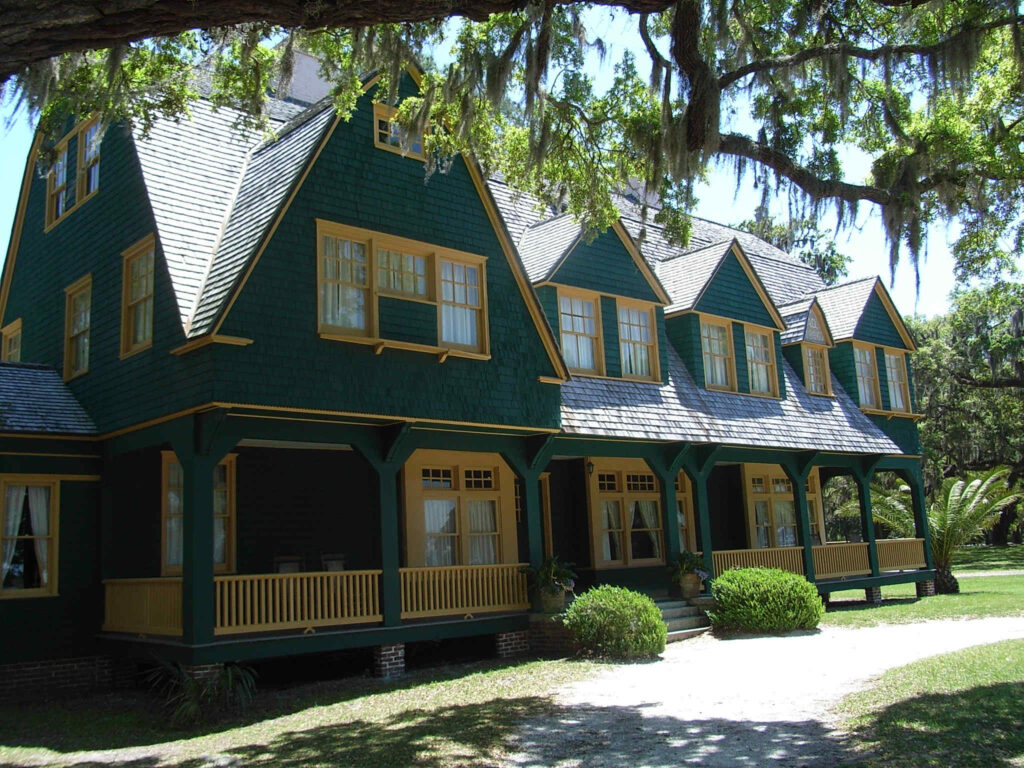
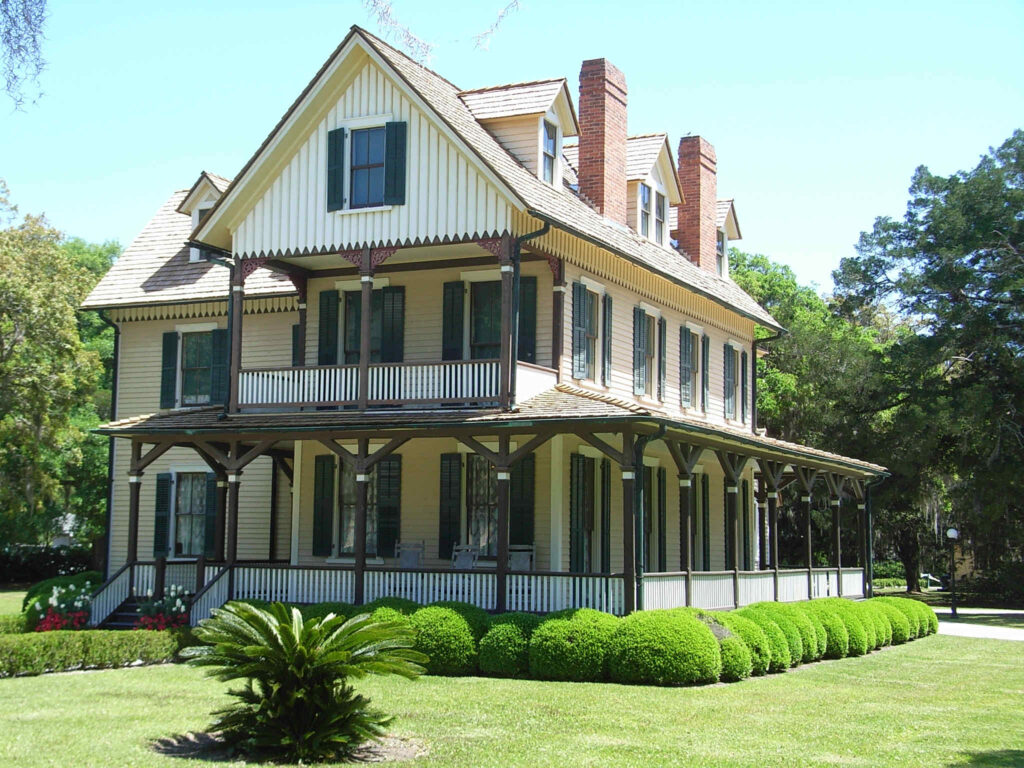
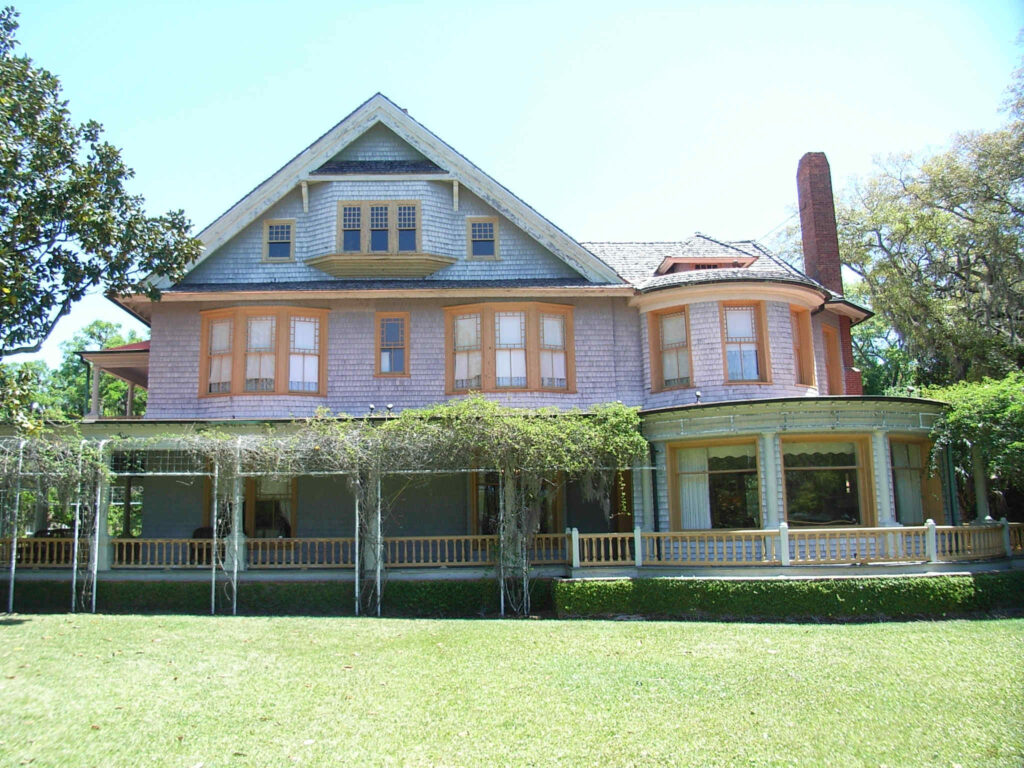
Further south at Fort Myers, Florida, Henry Ford spent part of the winter at a very modest property, The Mangoes, which was built in 1911 close to the winter home of Thomas Edison.
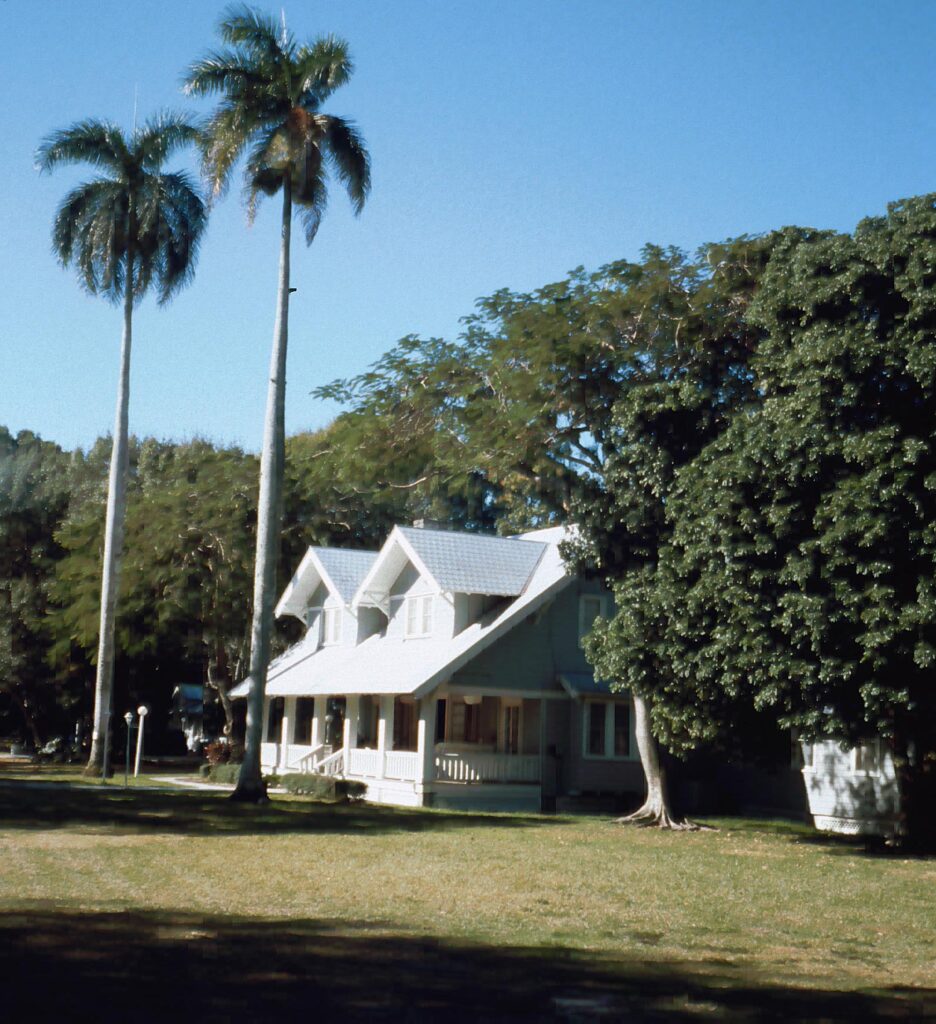
The most exclusive place for summer cottages was Newport, Rhode Island where sailing and swimming were the key daytime activities to pass the time until formal evening entertainment could begin. The season only lasted for six weeks but for many that must have been quite sufficient. Some of the earlier house like Kingscote (below) can just about be described as ‘cottages’.
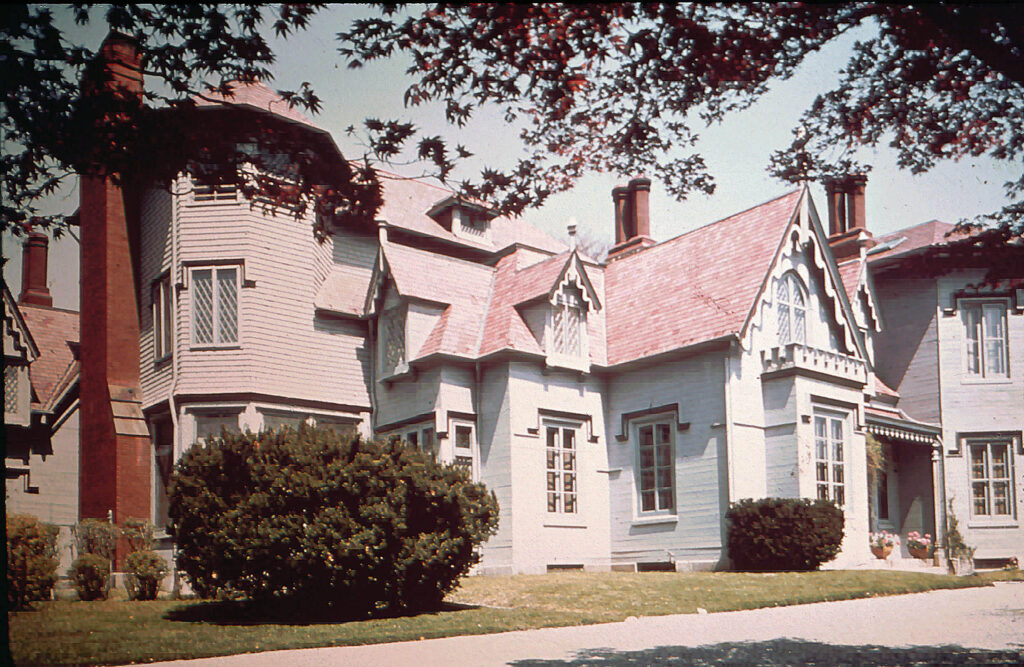
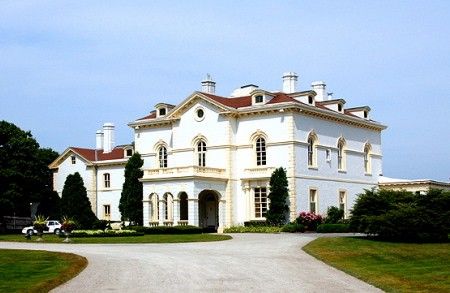
Grandest of all are the Vanderbilt ‘cottages’. Alva Vanderbilt’s husband, ‘Willie K’, built Marble House in 1892 as a 40th birthday present for Alva and she kept it in the subsequent divorce settlement.
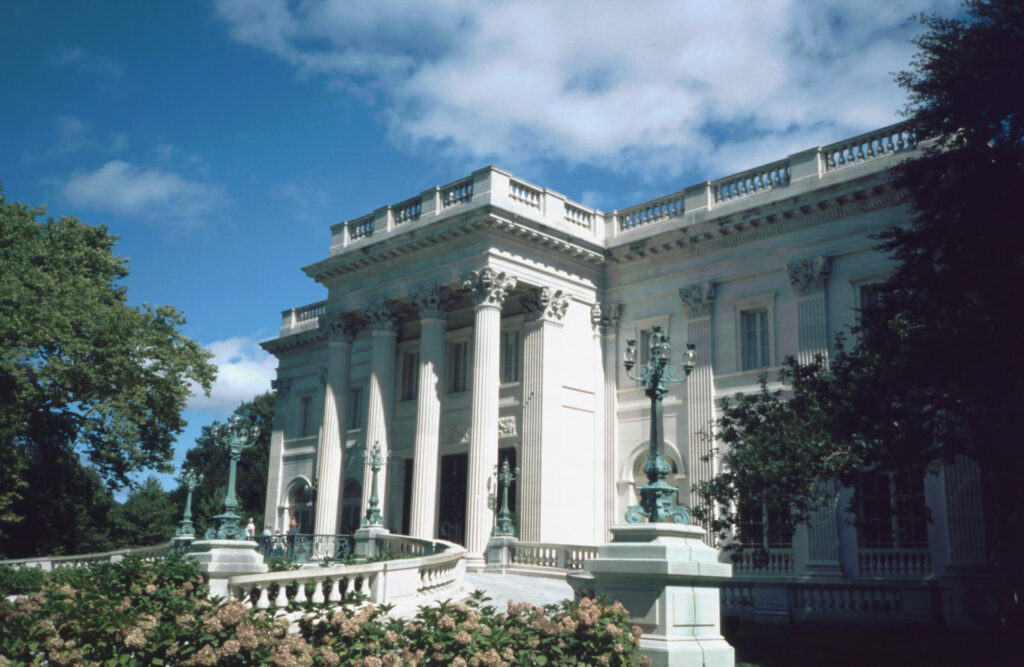
We have come a long way from those modest wooden homes to this imposing palace full of formal, period rooms but not everyone’s choice for a relaxing holiday.
In a later essay in this series we will contrast the 1890s cottages in Newport, Rhode Island with the 1990s cottages at Seaside, Florida, a pioneering example of what has come to be known as the New Urbanism.
Roger Mitchell
Difference Between Bacteria and Viruses
Bacteria (top image below) and viruses (bottom image below) can cause many common infections but they are very different microorganisms. Bacteria are over 100 times larger than viruses, but both require a microscope to be seen.
Bacteria are made up of a single cell. They are very diverse and can have a large variety of shapes and structural features. Bacteria can live in almost every conceivable environment, including in or on the human body. Only a few bacteria cause infections in humans and are called pathogenic bacteria.
Viruses are even smaller than bacteria and like bacteria they are very diverse and have a variety of shapes and features. Viruses are parasitic which means that means they require living cells or tissue in which to grow (bacteria do not need this as they can reproduce on non-living surfaces). Viruses can invade the cells of your body, using the components cells to grow and multiply. Some viruses even kill host cells as part of their life cycle.
Bacterial and Viral Infections
Many bacterial and viral infections are contagious, meaning that they can be transmitted from person to person in many different ways including:
- close contact with an infected person including touching and kissing
- contact with the body fluids of a person who has an infection, particularly after sexual contact or when the person coughs or sneezes
- transmission from mother to child during pregnancy or birth
- coming into contact with surfaces contaminated with the bacteria or virus, such as doorknobs and then touching your face, nose, or mouth
- through the bite of an infected insect.
Examples of bacterial infections include: Strep throat, unitary tract infection (UTI), food poisoning, tuberculosis and tetanus.
Examples of viral infections include: Influenza, common cold, chicken pox, measles, human immunodeficiency virus (HIV) and, of course, COVID-19 is caused by a virus.
Treating bacterial and viral infections
There is not much you can do to treat a viral infection, such as the common cold, except wait it out and use over-the-counter (OTC) medications to help relieve your symptoms. In some cases, a secondary bacterial infection may develop during or following a cold such as sinus infections or pneumonia.
There’s a mistaken belief that green mucus indicates a bacterial infection that requires antibiotics. In fact, green mucus is actually caused by substances released by your immune cells in response to a foreign invader. The type of microorganism causing a condition can be identified by culturing samples of a person’s blood, mucus, urine, stool or skin. For bacterial infections, it can also help to determine which antibiotic may be helpful in treating your condition.
Antibiotics are medications used to treat bacterial infections. There are many types of antibiotics, but they all work to keep bacteria from effectively growing and dividing. They’re not effective against viral infections. Despite the fact that you should only take antibiotics for a bacterial infection, antibiotics are often requested for viral infections but such over-prescribing of antibiotics can lead to antibiotic resistance. When prescribed, you must take your entire course of antibiotics as skipping doses can prevent killing all of the pathogenic bacteria.
As there is no specific treatment for many viral infections, treatment focuses on relieving symptoms, while your body works to clear the infection. This can include drinking plenty of fluids to avoid dehydration, getting plenty of rest, using over-the-counter medicines to relieve pain or lower temperature and taking decongestants or throat lozenges. In some cases, doctors may prescribe an antiviral medication to help treat a condition, which seek to inhibit the viral life cycle in some way. Examples include oseltamivir (Tamiflu) for influenza or valacyclovir (Valtrex) for herpes simplex.
Many vaccines are available to help prevent various viral and bacterial illnesses. Examples of vaccine-preventable diseases include measles, influenza, tetanus and whooping cough. A vaccine works by training the immune system to recognize and combat pathogens, either viruses or bacteria. To do this, certain molecules from the pathogen must be introduced into the body to trigger an immune response. These molecules are called antigens, and they are present on all viruses and bacteria. These micro-organisms may be very small, as are the differences between them, but they are quite significant and affect our lives in very different ways.
Alan Potter
The Voice
C.R Wordingham
I heard the guns of Alamein
I saw the desert skies
Alight as if in daylight
And heard the anguished cries
I saw the mangled bodies
Astrew the dull terrain
And midst the bloody carnage
Where all seemed so insane
I heard a distant mocking voice
We’ll ne’er do this again
I heard the guns of Normandy
I felt the raging roar
Alight as if a furnace
Had opened up its door
I heard the cries of dying
And those whose time was near
And gentle tones of padres
When kneeling down in prayer
And those in apple orchards
Beside the leafy lanes
I heard a distant mocking voice
We’ll ne’er do this again
I heard the Belsen silence
Where all the voices stilled
Saw hosts of putrid corpses
Of humans harshly killed
I breathed the stench of Belsen
And felt the bitter shame
I heard again the mocking voice
We’ll ne’er do this again
I saw the fields of Flanders
Our fathers fought to gain
And from the myriad crosses
Which mark their last domain
I heard that distant mocking voice
We’ll ne’er do this again.
My favourite subject and my lesson on poetry during teaching practice many, many moons ago got me my distinction! My brother was at school and was a great friend of the poet and author Michael Rosen and when they were at school he would frequent our house. In 2016 my brother died as a result of Parkinson’s and I last saw Michael at his funeral. Worryingly Michael himself has been very, very ill with Covid 19 and has just come out of ICU after 8 weeks.
Over the years as a teacher I turned so often to Michael’s poetry and writing for my lessons and the one that got them all going was Chocolate Cake. It is far too long to put here but read with feeling, appropriate pauses and expression it will amuse many a grandchild!
I have always enjoyed writing poetry but my father was a dab hand from “Ode to a Duvet”, “I wish I was a whisky glass” to “Lament to Failing to Remember” (written in later years as you might have guessed) and many others, including this one, “The Voice”.
Dad was in the blood transfusion unit of the 8th Army and was at the liberation of Belsen. We read this poem as one of three poems by him read at his funeral at aged 89 years 2001.
Jacqui Henshaw
Responses
We have received some favourable comments on the poetry edition and the Forum project. Please keep letting us know what you think.
Contacts
Chair: Alan Potter
alanspotter@hotmail.com
07713 428670
Secretary: Roger Mitchell
rg.mitchell@btinternet.com
01695 423594 (Texts preferred to calls)
Membership Secretary: Rob Firth
suesmembers74@gmail.com
01704 535914
Forum Editor: Chris Nelson
chris@niddart.co.uk
07960 117719
Facebook: facebook.com/groups/southportues
See our archive for previous editions of the SUES Forum!

